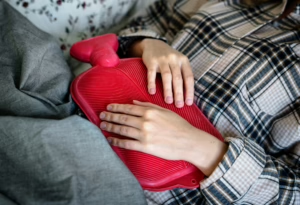Are you ready to take a deep dive into the fascinating world of attachment theory? Buckle up, because we’re about to explore how our early experiences with caregivers shape our attachment styles in adulthood.
Primary Attachment Styles
There are four primary attachment styles: secure, anxious-preoccupied, avoidant, and disorganized. Let’s take a closer look at each one, shall we?
Secure
First up, the secure attachment style. If this is you, then congrats! You’re like a relationship superhero! You have a positive view of yourself and your partner, and you’re not afraid to show your feelings. People with a secure attachment style have a strong sense of self-worth, and they know how to build healthy relationships based on mutual respect, trust, and support. Give yourselves a pat on the back, secured peeps.
Anxious-Preoccupied
Next, we have the anxious-preoccupied attachment style. If this is you, then you might need to take a deep breath and put down your phone for a second. You may struggle with self-esteem and seek validation from your partner. Your hyperactivated attachment system can cause you to overanalyze every little thing and interpret changes in your partner’s behavior as rejection or abandonment. Let’s work on building up that self-worth, so you don’t have to rely on your partner for validation.
Avoidant
Moving on, we have the avoidant attachment style. If this is you, then you might be feeling a bit…detached right now. You may have a positive view of yourself, but you struggle with emotional intimacy. You might avoid getting too close or expressing your feelings, which can create a sense of emotional distance in your relationships. Let’s try to break down those walls and open up to your partner, okay?
Disorganized
Last but not least, we have the disorganized attachment style. If this is you, then you might be feeling a bit all over the place right now. You may have experienced trauma or abuse in your early relationships, leading to a sense of fear and confusion around emotional intimacy. This can make it difficult to regulate your emotions and may result in contradictory or unpredictable behaviors in relationships. Let’s take a moment to acknowledge your trust issues and work on building a healthy sense of emotional regulation.
Now that we’ve explored the different attachment styles, let’s talk about why it’s important to know yours and that of your partner. By recognizing and addressing any negative patterns or tendencies in your attachment style, you can develop more secure and positive relationships. Plus, by communicating openly and honestly about your attachment styles, you can better understand each other’s behavior and needs in the relationship.
Remember, your attachment style can evolve and change over time, as you gain new experiences and work on personal growth. By practicing self-awareness and self-reflection, you can identify areas for improvement and take active steps towards developing a more secure attachment style. So, let’s get to work on building stronger, healthier, and more fulfilling relationships with ourselves and those around us.
Attachment theory offers valuable insights into the complexities of human relationships. And let’s be real, who doesn’t love a good self-reflection session? So, let’s dive deep, have some laughs, and work on becoming our best relationship selves.
Head photo by Markus Spiske











